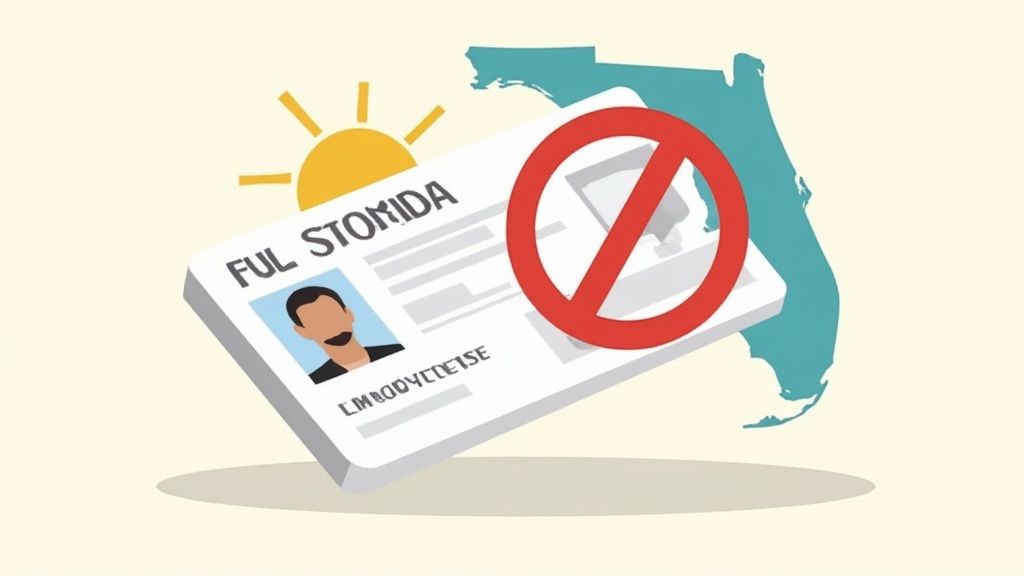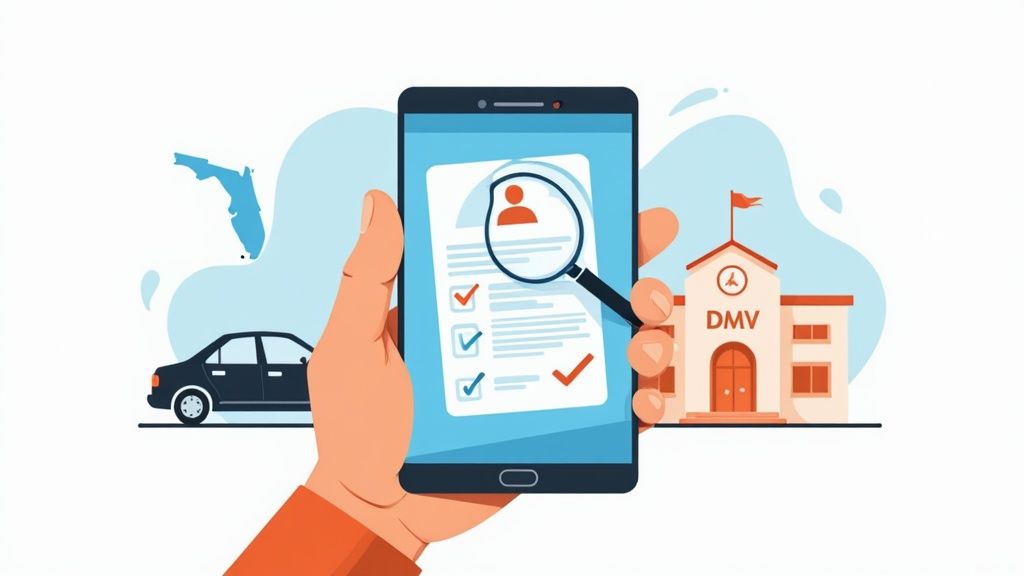The road test represents the final hurdle between you and your driver’s license. Statistics show that 35% of first-time test takers fail their road exam nationwide.
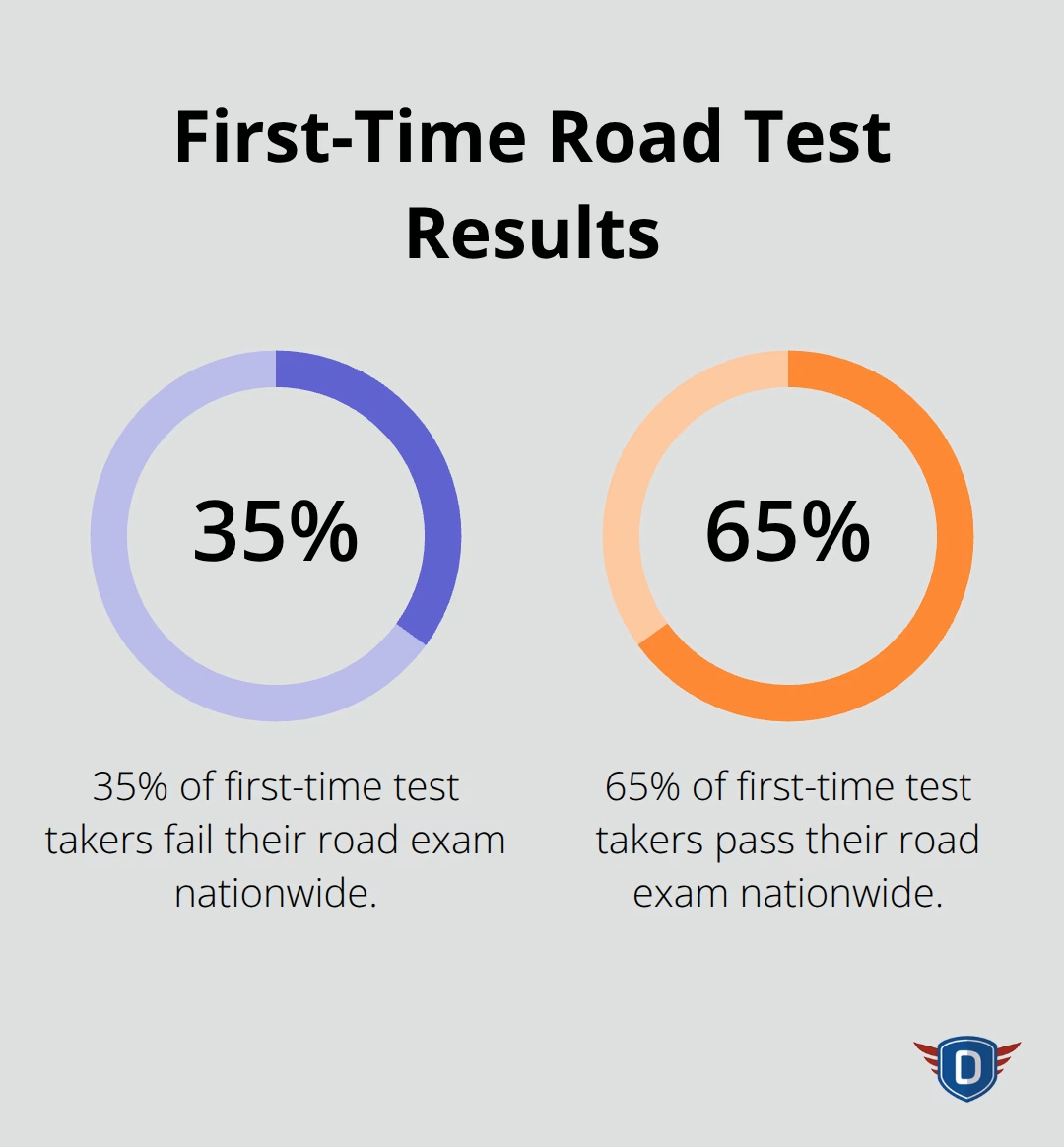
We at DriverEducators.com know that understanding how to pass road test requirements makes the difference between success and disappointment. Mastering specific skills beforehand transforms nervous drivers into confident license holders.
What Preparation Steps Guarantee Road Test Success
Road test preparation demands systematic planning that starts weeks before your scheduled exam. While comprehensive preparation is essential, actual pass rates vary significantly by region and preparation method. Your state’s specific requirements vary significantly, with some states that require parallel parking demonstrations while others focus on highway merging skills. California mandates backing around a corner, while Texas emphasizes three-point turns in residential areas. Check your local DMV website for the exact maneuvers tested in your region, as this knowledge shapes your practice priorities.
Schedule Professional Instruction Early
Professional instructors provide structured learning that family members cannot match. However, research indicates that the effectiveness of formal driver education programs varies considerably across different studies and implementations. Book lessons at least one month before your test date, as qualified instructors often have waiting lists. During these sessions, request practice on specific maneuvers that your test location requires. Professional instructors know common testing routes and can simulate actual exam conditions, including the pressure and timing constraints you’ll face.
Master Your Test Vehicle Before Exam Day
Familiarity with your test vehicle determines performance quality on exam day. Practice exclusively in the car you’ll use for testing (spend a minimum of 10 hours behind its wheel). Different vehicles have varying brake sensitivity, steering responsiveness, and blind spot configurations. Adjust mirrors, seat position, and steering wheel height to your preferences during practice sessions. The National Highway Traffic Safety Administration emphasizes that driver comfort with vehicle controls reduces reaction times by up to 15%. Test all functions including turn signals, windshield wipers, and parking brake operation to avoid mechanical surprises during your exam.
Learn Your Testing Route and Area
Most DMV locations use consistent routes that follow predictable patterns through nearby neighborhoods. Drive through your testing area multiple times to identify challenging intersections, school zones, and construction areas. Note speed limit changes, particularly in residential zones where limits drop to 25 mph. Practice common maneuvers like parallel parking in the actual spaces near your DMV office, as these spots often mirror the test setup. This preparation builds confidence and eliminates surprises that cause many test failures.
The foundation you build through proper preparation sets the stage for executing the specific driving skills that examiners evaluate most closely.
Which Skills Determine Road Test Success
Parallel parking failure accounts for 23% of road test defeats nationwide, making it the single most important skill to master. Research shows that extensive practice significantly improves success rates compared to minimal preparation. Position your vehicle alongside the front car with mirrors aligned, then reverse slowly while you turn the steering wheel fully toward the curb. When your vehicle’s rear bumper clears the front car’s bumper, straighten the wheel and continue backing until your front bumper aligns with the rear car’s bumper. Your final position must place you within 12 inches of the curb to pass most state requirements.
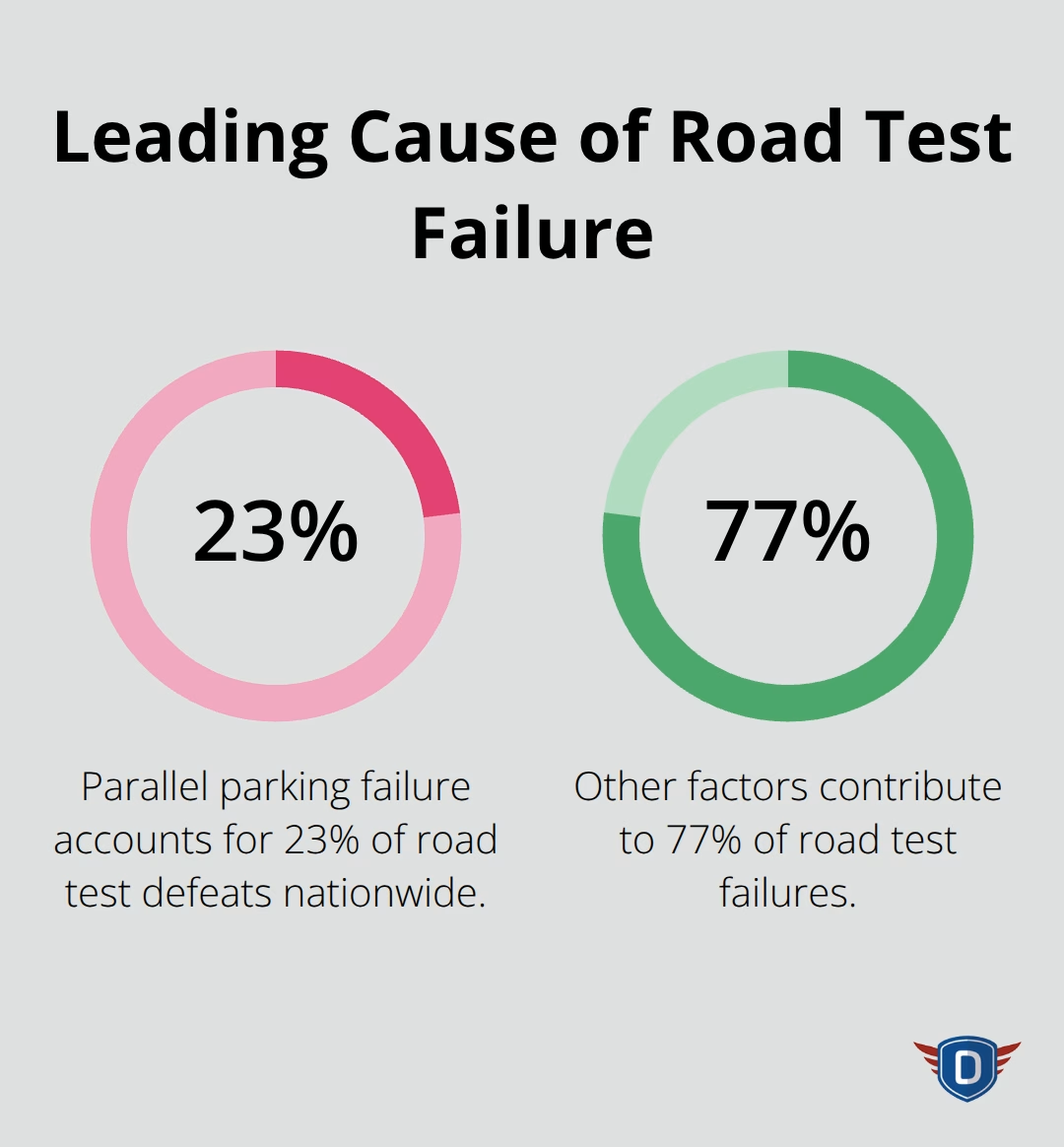
Master Lane Changes Under Examiner Pressure
Lane change execution separates confident drivers from nervous test-takers who telegraph their inexperience. Signal your intention at least 100 feet before you change lanes, then check your rearview mirror, side mirror, and blind spot in that exact sequence. Studies show that blind spot monitoring systems reduce crashes with injuries by 23%. Accelerate slightly during the lane change to match traffic flow rather than force other drivers to adjust their speed.
Perfect Three-Point Turn Technique
Three-point turns require similar precision to parallel parking but demand spatial awareness in tight spaces. Signal right, turn the steering wheel fully clockwise, then reverse with the wheel turned fully counterclockwise, and complete the maneuver with another right turn. Practice these movements until they become automatic responses rather than conscious decisions. Most examiners allow three attempts maximum (though some states permit only two), so accuracy matters more than speed.
Control Your Acceleration and Braking Timing
Smooth acceleration and braking demonstrate vehicle control that examiners prioritize above speed. Gradual acceleration prevents wheel spin and shows mechanical sympathy, while progressive braking avoids passenger discomfort that signals inexperience. Smooth driving techniques improve vehicle efficiency and reduce wear on mechanical components. Apply steady pressure to the accelerator pedal, reach your target speed gradually over 3-4 seconds rather than rush. When you brake, begin with light pressure and increase gradually, come to complete stops without jerky motions. Your steering inputs should flow smoothly through turns without sudden corrections that indicate poor planning or vehicle control problems.
Even perfect execution of these fundamental skills won’t guarantee success if you commit the common errors that cause automatic test failures.
What Mistakes Cause Instant Road Test Failure
Mirror and blind spot negligence triggers automatic failure in road tests according to the National Highway Traffic Safety Administration. Examiners watch specifically for head movement that indicates shoulder checks during lane changes, merges, and reverse maneuvers. Check your rearview mirror every 5-8 seconds during normal drive time, side mirrors before any lateral movement, and always turn your head to scan blind spots. The Insurance Institute for Highway Safety reports that proper mirror usage reduces lane-change crashes by 14%. Many test-takers assume quick glances suffice, but examiners need to observe deliberate, obvious check motions that demonstrate awareness.
Stop Sign Violations End Tests Immediately
Roll stops account for immediate road test failures nationwide. Complete stops require your speedometer to reach zero for a minimum of 2-3 seconds behind the stop line or crosswalk. Count one-thousand-one, one-thousand-two, one-thousand-three before you proceed to demonstrate full compliance. Right-of-way errors at four-way stops create additional failure points when drivers proceed out of turn or yield incorrectly to traffic with priority. The first vehicle to arrive proceeds first (or yield to the driver on your right when you arrive simultaneously).
Speed Control Demands Precision
Speed violations cause test failure in both directions – drivers fail for excess of limits while others fail for drive speeds too slow. Maintain speeds within 5 mph of posted limits in ideal conditions, but match traffic flow when safe. School zones require strict 15-25 mph compliance regardless of traffic patterns. Construction zones often reduce limits by 10-15 mph with zero tolerance for violations. Your examiner evaluates speed management as a safety indicator, so demonstrate awareness of change conditions through appropriate adjustment. Drive 10 mph under the limit in good conditions signals overcaution that concerns examiners about your confidence and road awareness (this applies particularly in suburban test areas).
Intersection Navigation Errors
Intersection mistakes create immediate failure scenarios that catch unprepared drivers off guard. Turn signal activation must occur at least 100 feet before your intended turn, not at the last second when you reach the intersection. Yellow light decisions require quick judgment – proceed only if you cannot stop safely before the line. Red light violations result in automatic failure regardless of traffic conditions or examiner instructions.
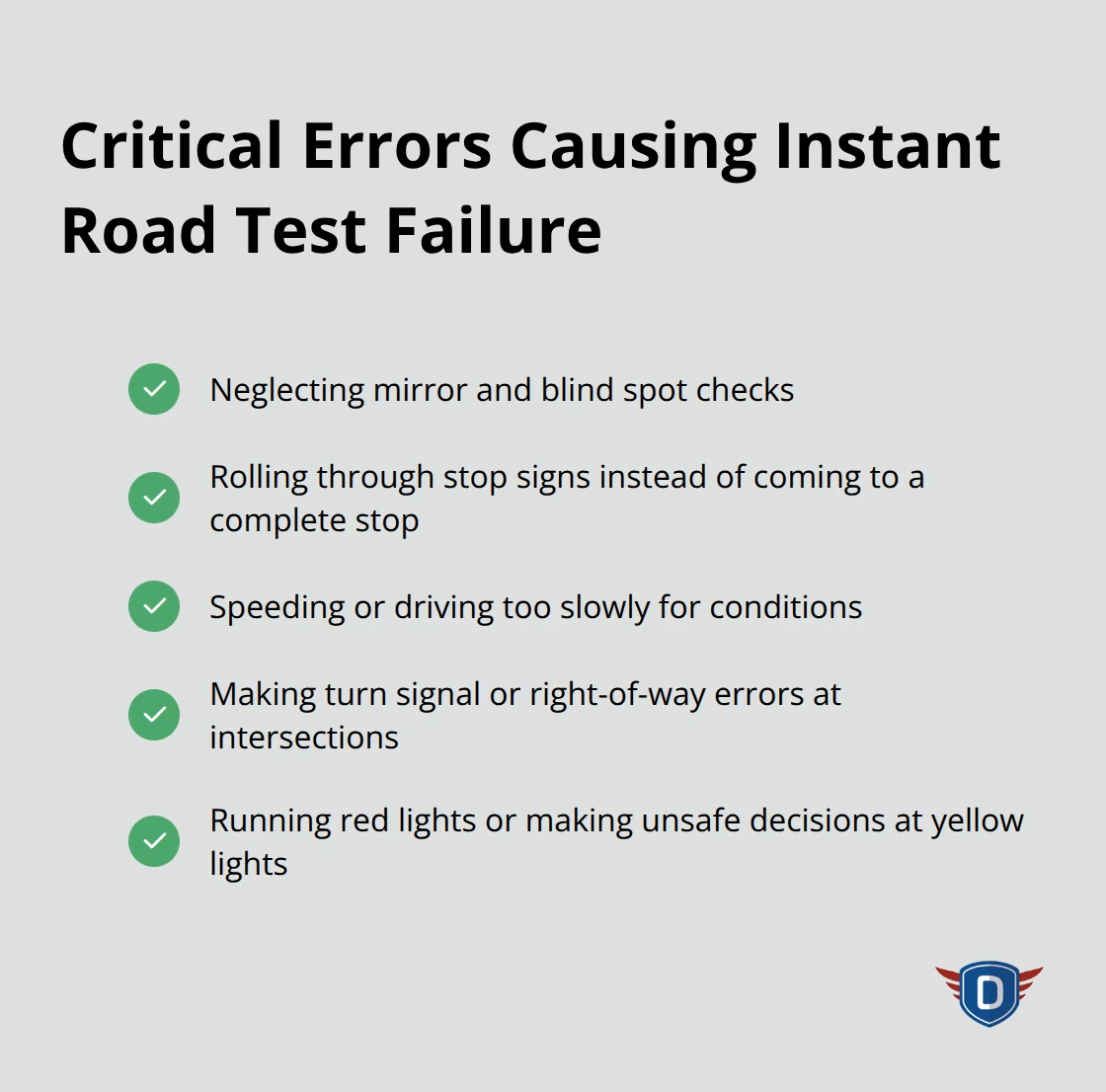
Final Thoughts
Road test success requires you to master parallel parking, three-point turns, and smooth vehicle control while you avoid critical errors like rolling stops and blind spot negligence. These fundamental skills separate candidates who pass from the 35% who fail their first attempt. Your preparation determines whether you join the successful majority or face the disappointment of retaking the exam.
Your education continues after you obtain your license. New drivers face increased accident risks during their first year, which makes continued practice vital for long-term safety. Regular practice in varied conditions builds the experience that transforms basic license holders into truly competent drivers.
Professional instruction accelerates your progress beyond what family members can provide. DriverEducators.com connects you with qualified instructors who understand how to pass road test requirements and help you develop safe habits. The skills you develop through proper instruction and continued practice protect you and others on the road for years to come (making your investment in quality education worthwhile).
